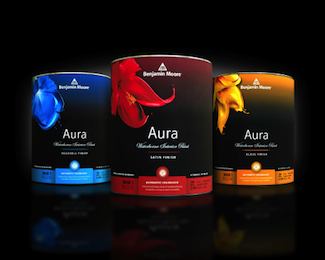Paints and Coatings

It's hard to overestimate the importance of paint and coatings to the appearance of a home. The almost infinite variety of colors, shades, and textures available in today's paints and other coatings (such as stains) allows homeowners to express their creativity and individuality like never before.
Too often, the very paints and coatings that provide such unique living spaces can also contribute to them negatively, in the form of unhealthy air. If you're choosing to create a 'green' home, choosing the right paint products means adding an extra step to the process. In addition to choosing the perfect colors to make a home's interior your own, it's just as important to choose products that won't add unnecessary pollution to your indoor air.
A green home is a healthy home, and the right paint or stain product is one of the most important ways to ensure your home's indoor living spaces contribute to the wellness of those who live there. Luckily, there are a growing number of options to choose from, allowing you to still have the home of your dreams without sacrificing air quality.
Meet the Enemy: VOCs
Even without knowing it, you're probably very familiar with VOCs. Volatile Organic Compounds are gases emitted from many products, including paints and other interior coatings. That 'new paint' smell? VOCs. The strong odor of a new coating of stain or varnish? You guessed it, VOCs.
The problem with VOCs is that inhaling them can contribute to short- and long-term adverse health effects. Concentrations of VOCs are typically much higher indoors (10 times or more) than outdoors. Any green homeowner should seek to reduce these levels as much as possible.
Health Effects of VOCs
Having high levels of VOCs in the home can lead to minor issues such as eye, nose, and throat irritation, headaches or nausea. Unfortunately, exposure to high VOC levels can also lead to liver, kidney, and central nervous system damage as well as chronic respiratory conditions such as asthma. Other symptoms can be allergic skin reactions, fatigue, and dizziness. Exposure to VOCs has also been linked to cancer; the more we can reduce VOC levels in the home, the better off we'll all be.
While VOC levels are at their highest right after painting, they can continue seeping out of a painted surface for several years.
Green Products To The Rescue
Today, there are a growing number of exciting new paint products available that have much lower VOC levels than traditional products. (And they're not just green: they come in all kinds of colors!) Once thought to be vital to the performance of paint, companies are finding ways to create paints that contain little or even no VOCs with no loss of performance.
Paint 101
Paint contains three major components, pigment (coloring), binders (which help the pigment stick to applied surfaces), and solvents (which keep the paint in liquid form). Solvents typically contribute the most to VOC levels.
Oil-based solvents include formaldehyde, toluene, alcohol ketones, and acetates. They don't even sound like the kind of things you'd want in your home.
Water-based solvents, found in latex paints, have lower VOC levels and are generally more environmentally friendly.
Choosing Low-VOC or No-VOC Products
Most low-VOC paints tend to have VOC levels of 50 grams per liter or less. These levels are found on the labels of paint or other coatings.
Look for the Green Seal
Low- or no-VOC products are great, but they can still contain other toxic chemicals. To solve this problem, look for products that carry the GREEN SEAL label. These products are guaranteed to meet strict environmental standards. Green Seal products must be at least low-VOC, but must also be free from many toxic chemical compounds including carcinogens, reproductive toxins, air pollutants, heavy metals and formaldehyde.
If you're worried that a Green Seal-approved product won't perform as well, don't worry: Green Seal products must also meet performance criteria such as abrasion resistance, hiding power, and washability.
Natural Paints
If you're looking for truly natural alternatives to synthetic paints, there are natural paint products, which are made of naturally-occurring materials such as clay, lime, linseed oil and chalk. While low in VOCs, natural products may contain higher levels of unregulated VOCs from ingredients like citrus oils and terpenes, which can be aggravating to some. Cadmium, a metal used in some natural yellow pigments, is highly toxic. Always check the label on any product you introduce into your home.
Further Green Standards To Look For
Greenguard: The Greenguard Environmental Institute's goal is to improve public health through programs that improve indoor air. Look for products that have earned the Greenguard Indoor Air Quality seal of approval.
Master Painter's Institute Green Performance Standard: This program is dedicated to the establishment of quality standards and quality assurance in the paint and coating application industries in the U.S. Products certified with the MPI Green Performance Standard are tested and guaranteed to be safe for indoor use.
Green Home Source is committed to staying abreast of the latest developments in environmentally-friendly paints and coatings. We feel that it's possible to have the best of both worlds: A comfortable, inviting home that matches your creativity and personality, while at the same time providing a clean, safe environment for your family.
To learn more about creating a healthy indoor air environment, click here.
BENJAMIN MOORE AURA PAINT: The Benjamin Moore Green Promise line of paints includes the Aura and Natura paint products.
Aura is a durable, washable low-VOC paint perfect for any home. Natura paint is a new, zero-VOC paint product offering virtually odorless performance for the ultimate in eco-friendly paint.
For more about the eco-friendly products available, check our our article: Benjamin Moore Aura Paints.
comments powered by Disqus






































































































































